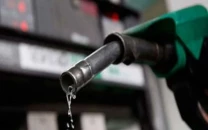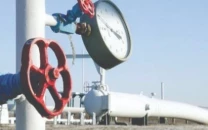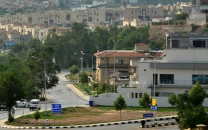The myth of Central Asia's trade potential
Gwadar even presently handles containerised and bulk cargo.

This write-up analyses the much-touted 'trade potential of Central Asia'. But first an AI Overview of Gwadar Port (GP) and Chabahar (CPP). GP, by 2045, is designed to handle 400 million metric ton (mmt) cargo annually, through 100 berths. By comparison, CPP - once fully operationalised - will have 82 mmt cargo handling capability. China's Overseas Port Holding Company (COPHC) operates GP. Gwadar even presently handles containerised and bulk cargo. The naturally deep Gwadar seaport, with 20-meter-deep approach channel, will eventually handle vessels of up to 50,000 deadweight tonnage (DWT), container ships of 100,000 DWT, and bulk carriers of up to 200,000 DWT. It is the only port in the region that would handle 200,000 DWT supertankers, compared to Chabahar's 20,000 tons. GP's natural depth entails low maintenance costs in dredging, etc. Gwadar's slated yearly capacity equals the annual volume of all ports in India.
The new and large Gwadar International Airport significantly boosts GP's trade and commercial potential. Gwadar Master Plan (GMP), partly executed under CPEC, includes development of Gwadar, the Port, airport, corresponding transport system, East Bay Expressway, besides economic and social development in Gwadar Free Zone. GMP has many sub-projects i.e. transport connectivity, daily production of around 12,500 tons of 'raw copper', power generation, railways, seawater desalination, etc.
Chabahar, by comparison, will have 10 berths, is less deep, needs extensive dredging, requires passage through narrow Gulf, has comparatively less developed infrastructure and facilities, and offers comparatively low handling capacity, especially for larger vessels. It is, however, integral to Iran's geo-strategic ambitions, especially in connivance with India, which is developing it as a commercial hub for trade with Afghanistan and Central Asia. However, Indian trade via CPP bypassing Gwadar is, relatively speaking, expensive. CPP, nonetheless, is likely to boost India's economy, and trade with Europe and Russia using the 'International North South Transport Corridor'.
CPP's cited connectivity is 'presently' better than GP in restive Balochistan. However, GP lies at the terminus of 21st Century Maritime Silk Road under CPEC, connecting Central Europe, North Sea, Mediterranean Sea and the Chinese coast.
And now central Asia's 'true' trade potential. Pakistan's trade with Central Asian Republics (CARs) is roughly between $400 and $500 million annually. Pakistan's bilateral trade with Uzbekistan was $145 million in 2020-21; it crossed $28 million (2022) with Azerbaijan and was almost $ 91 million for the first eight months in 2024; recorded at $7 million with Kyrgyzstan for the same period in 2024; was $0.735 million with Turkmenistan for the same period; remained $36.46 million (2023) with Tajikistan; and was over $139 million with Kazakhstan during 2022-23. In 1995, Pakistan signed a 'Quadrilateral Traffic in Transit Agreement (QTTA)' with China, Kyrgyzstan and Kazakhstan to facilitate transit trade through Gwadar.
Pakistan-CAR trade potential can increase to over $5 billion in the next two years or so, but challenges remain. The main hurdles are infrastructure deficiencies; sub-optimal transportation networks and connectivity; border crossings issues; complex trade regulations and bureaucratic hurdles; security concerns, including those related to terrorism; and difficulty in visa processing for businessmen and drivers.
So, firstly, what is the assessed true trade potential of CARs? During 2022, the intra-regional trade 'among CARs' was nearly $10 billion, expanding 2.5 times during the last ten years, with Kazakhstan emerging as the lead trading partner. By comparison, Pakistan's trade with China only, in 2022, was $17.8 billion; with the United States $6.1 billion; with Saudi Arabia over $5 billion; and with the UK over $2 billion. Pakistan's total international trade in 2023 was $35.8 billion.
Secondly, in the energy sector, Turkmenistan-Afghanistan-Pakistan-India (TAPI) Project to import gas from the Galkynysh gas field in Turkmenistan is touted as the bedrock of Pakistan's energy security. TAPI will yearly transport up to 33 billion cubic meters (bcm) of natural gas, for 30 years. Once monetised at today's value, this makes around $184 million, if the pipeline, costing $10 billion is developed. TAPI is marketed as critical for gas availability, given Pakistan's depleting reserves.
Thirdly, the Turkmenistan-Afghanistan-Pakistan (TAP) Project for 500 KV power transmission to Pakistan is still on the drawing board. CASA (Central Asia South Asia) - 1000 Project, a joint venture between Tajikistan, Kyrgyzstan, Afghanistan and Pakistan, costing $1.2 billion, to transport 1,000 MW surplus electricity from Tajikistan/Kyrgyzstan to Pakistan/Afghanistan (300 MW) during May-September, stands suspended after Taliban assumed power in Afghanistan.
If you put it all this together, the CAR trade potential ($10 billion globally) and their bilateral trade with Pakistan ($400-$500 million) is not disproportionately lucrative, given their smaller populations, not very developed industrial output, and their historic orientation towards Russia/Turkey for global trade.
Although the three cited energy projects seem 'critically attractive', these are plagued with geopolitics and economic pitfalls and lack cooperative regional framework. With the moneys needed for TAPI, CASA and TAP projects, Pakistan can and should upgrade its dated electricity distribution system, the main bottleneck in electricity transmission to consumers. With completion of CPEC power projects, Pakistan's current production capacity, at 49,270 MW, already outstrips peak demand of around 29,000 MW in summers. The is not withstanding the solar power generation that is currently 10-15 GW and is projected to reach up to 60% in the electricity generation mix by 2030. With abundant and cheaper electricity, aggressive exploration and development of gas fields and LNG imports, gas shortages can be overcome.
Therefore, it is time to look dispassionately at the whole gamut of, and fascination with, CAR trade potential. This is not to say that exploring and expanding ties with these brotherly Muslim countries be halted. Contrarily, such links be deepened, while keeping expectations aligned to realities.
From geopolitical standpoint, Indian investment in CPP and Chinese in Gwadar generate, perceptively at least, a sense of "strategic encirclement". China dreads encirclement by the US, India by China, and Pakistan by India. This, according to scholars like Neil Padukone, prompts 'containment strategies'. India cloaks its anti-Pakistan, anti-China maneuvers, as trade with Central Asia, access to Afghanistan's Hajigak iron ore and Afghan natural resources.
In the long run, the India's pipeline-to-road-to-rail-to-sea-to-road shipment costs through CPP would be prohibitively expensive, compared to direct transit through Pakistan. One more compelling reason for Modi to relent!














COMMENTS (1)
Comments are moderated and generally will be posted if they are on-topic and not abusive.
For more information, please see our Comments FAQ